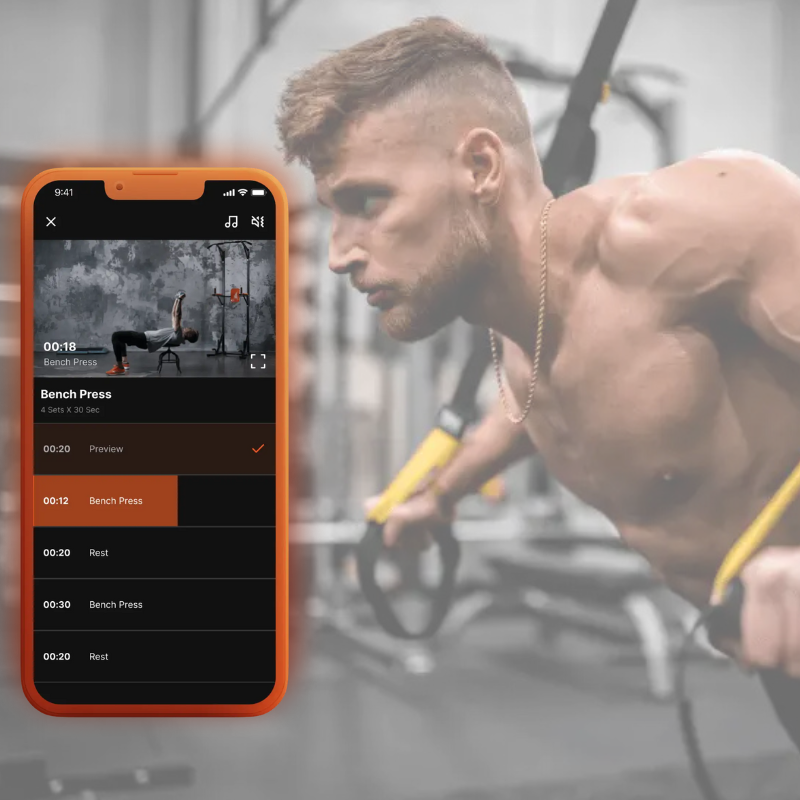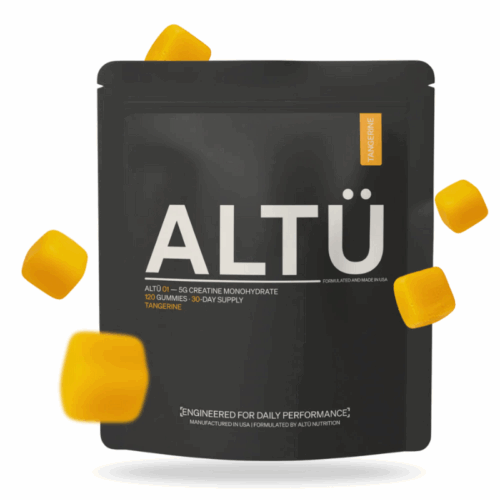Transform your fitness journey with the MadMuscles app! Offering over 200 personalized workouts tailored to your goals, this all-in-one fitness solution combines dynamic and static exercises for maximum results. Enjoy a customized meal plan that fits your dietary preferences, making healthy eating simple and enjoyable. With a habit-building system designed to foster resilience and well-being, you'll not only see physical changes but also cultivate healthy habits. Join over 100,000 satisfied users worldwide and experience effective workouts that deliver results—improving your fitness and lifestyle effortlessly. Choose MadMuscles today and embrace a healthier, happier you!
Description
MadMuscles is a consumer fitness app that builds personalized workout plans and nutrition guidance for everyday users. It’s available on iOS and Android, positioned as a lower-friction alternative to hiring a coach: take a short onboarding quiz, get a tailored program, and train at home or in the gym.
This review takes an educational, research-forward approach. You’ll find: what the app claims to do, how those claims map to current evidence on fitness apps, how MadMuscles compares with similar tools, what users report, where the business model shines (and where it doesn’t), and key privacy and cancellation details you should know.
What MadMuscles Says It Does
- Personalized training via a quick assessment and adaptive workout programming.
- Multiple goal tracks (gain muscle, lose fat, get “shredded”), with “static and dynamic” sessions and instructional videos.
- Cross-platform access (App Store / Google Play) and in-app subscription.
The brand positions itself as making regular workouts “accessible, effective and joyful,” a phrasing consistent across its marketing.
Who’s Behind It?
Public listings and third-party profiles link MadMuscles to AmoApp Inc. (U.S.) and related entities in the EU, operating out of Las Vegas, Nevada and Nicosia, Cyprus. While corporate pages shift over time, multiple sources connect the app to this Amo/AmoApp umbrella. Treat non-official sources cautiously, but note that multiple independent references align on these points.
Key Features, Explained
1) Onboarding & Personalization
The app begins with a brief quiz that captures goals, experience, available equipment, and schedule. The output is a structured plan (with exercise demos and step-by-step instructions) and the option to preview equipment and session length before starting.
Evidence check. Personalization and adaptive programs are consistent with best practices in digital behavior change. Reviews and systematic analyses show that apps using goal setting, self-monitoring, prompts, and tailored feedback can increase physical activity—modestly but meaningfully—versus controls.
2) Program Variety & Progression
Listings emphasize “static and dynamic” workouts tailored to level and goal, mixing strength, HIIT, and other modalities. Users can train at home or gym and progress through weeks of sessions.
Evidence check. Structured periodization and progressive overload are foundational in strength and conditioning; while consumer apps vary in rigor, the inclusion of progressive tracks aligns with recognized principles for hypertrophy and fat loss—provided intensity, recovery, and adherence are maintained.
3) Guidance & “Coach-like” Support
App copy and third-party reviews highlight video instruction, cues, and reminders to reduce guesswork. Some reviews mention “coach support,” though the extent (human vs. automated) can vary by plan and over time. As with any app, capabilities evolve with updates.
Evidence check. Digital coaching features—feedback loops, reminders, social or gamified nudges—map to Behavior Change Techniques (BCTs) linked to adherence (goal-setting, prompts/cues, feedback on performance, self-monitoring).
What Do Users Say?
- Ratings & scale. The Google Play listing shows 4.5/5 with 1M+ downloads and tens of thousands of reviews.
- Long-form feedback. Trustpilot hosts many reviews (over 11k at the time of writing), ranging from praise for plan clarity to complaints about billing confusion—typical of large consumer apps.
Third-party roundups are mixed in rigor; treat bold claims about pricing transparency or “best in class” with skepticism and triangulate against official app store pages and your own trial.
Pricing, Trials & Cancellation: What to Know
Pricing and tiers evolve, and may differ by region, platform, promotions, or bundles. Reports cite monthly, quarterly, and annual options; some mention a limited free trial window. Because numbers move, verify in-app at checkout for your locale.
Cancellation is handled through your App Store or Google Play subscriptions. To avoid renewal charges, turn off auto-renew at least 24 hours before the trial or billing period ends—this is standard for most app-store subscriptions.
Tip: Install via your primary platform, start any trial only after reviewing the renewal date, and set a reminder to reassess before the 24-hour cutoff.
Privacy & Data Practices
All fitness apps collect some combination of profile, usage, and device data; many also process health-adjacent data (e.g., weight, activity levels). Google Play’s Data Safety section summarizes developer-reported collection/sharing categories; policies can change with versions and regions. Review both the store disclosures and the in-app privacy policy before subscribing.
Context from research and news:
- Analyses and reviews have repeatedly raised privacy risk flags for the digital health sector: many consumer health/fitness apps share data with third parties; users often underestimate the value and sensitivity of this data.
- Broader debates about health data governance underline the need for transparent consent, minimizing data collection, and careful handling of location and biometrics. These are sector-wide issues, not specific to one app.
Practical checklist for any fitness app:
• Read the Data Safety/Privacy sections before purchase.
• Disable any unnecessary permissions (location, contacts).
• Use masked email services if you want extra separation.
• Periodically export/delete your data if the app supports it.
Does the Science Support Apps Like MadMuscles?
Short answer: Partly—if you engage with them. The literature suggests that well-designed mobile interventions can increase physical activity and help structure workouts, especially when they include behavior change elements and regular feedback. Effects are typically modest and rely on adherence.
Behavior Change & Gamification
Gamification (points, streaks, social challenges) can lift step counts and engagement, especially when paired with social support or competition—but design matters, and effects can wane without renewal.
Personalization
Meta-analyses across “personalized” mobile health interventions indicate better outcomes when the program adapts to user context and history. MadMuscles’ quiz-to-plan workflow is consistent with this approach; ultimate effectiveness will depend on the quality of progression, load management, and the user’s consistency.
Where MadMuscles Fits Among Competitors
While direct, head-to-head trials between consumer apps are rare, you can compare categories:
- Template libraries (e.g., generic workout generators) offer breadth but limited personalization.
- Algorithmic planners (MadMuscles’ pitch) aim to personalize intensity and session mix with onboarding data and ongoing checks.
- Coaching marketplaces pair you with a human coach; these tend to be pricier but provide nuanced form checks and program tweaks.
If you’ve plateaued on a generic plan, an adaptive app may freshen stimulus. If you have complex goals (e.g., rehab, sport-specific periodization), a human coach still wins.
Strengths
- Low friction personalization. The onboarding → plan pathway reduces decision fatigue—useful for new or returning trainees.
- Clear structure. Session previews, equipment lists, and video demos improve compliance by removing guesswork.
- Platform reach and social proof. Millions of installs and large review volumes suggest product-market fit (with the usual caveats about rating dynamics).
Limitations & Caveats
- Billing confusion is common in app ecosystems. Review sites surface complaints about renewals and refunds; minimize risk by managing subscriptions directly in Apple/Google settings and noting the 24-hour cutoff.
- Privacy is a moving target. Like many fitness apps, data collection can be extensive. Read the latest store disclosures and policy updates before committing.
- No magic—adherence rules outcomes. Evidence shows modest average effects; personalization helps, but sustained results hinge on training frequency, intensity, nutrition, sleep, and recovery.
How to Trial MadMuscles Like a Researcher
- Define your outcome metric up front.
- For fat loss: use waist measurement and weekly weight average.
- For muscle gain: track reps at a given load on key lifts and circumference (e.g., upper arm).
- For cardio: track time to complete a fixed distance or avg HR at fixed pace.
- Use a 4–6-week window. Long enough to detect a trajectory change for adherence and performance.
- Log compliance. Note missed sessions, sleep hours, and caloric intake bands. Changes in outcomes without context are uninterpretable.
- Audit the programming. Look for gradual progression, deloads, and accessory work that matches your weak points.
- Reassess privacy settings after one week to ensure you didn’t enable optional sharing you don’t need.
Practical Buyer’s Guide
- Best for: New-to-intermediate users who want a structured plan without hiring a coach; lifters returning from a layoff; home-gym trainees needing progression and variety.
- Maybe not for: People with injury rehab needs, advanced strength athletes needing bespoke periodization, or anyone requiring sport-specific programming.
- Budgeting: Expect subscription pricing with trial offers that vary by region and time. Confirm exact numbers at checkout and set a reminder before the trial ends.
Bottom Line
MadMuscles sits in the mainstream of algorithmically guided fitness apps: fast onboarding, clear sessions, and a broad user base. That design maps reasonably well to the evidence on behavior-change-enabled apps—which can nudge activity upward when you engage consistently. Still, outcomes hinge on your adherence, and you should approach billing (auto-renewals) and data sharing with eyes open. If you want structure without committing to a human coach, a 2–6 week controlled trial—paired with sensible measurement—can tell you if the app moves the needle for you.




